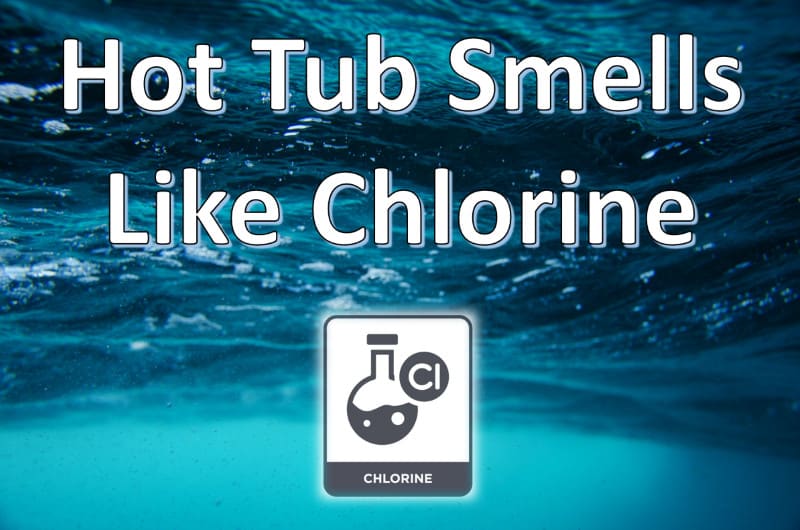How to lower chlorine in my hot tub?
To properly lower chlorine in a hot tub, you must first try and reduce it naturally. Adding freshwater or leaving the spa alone for a day or two will allow the chlorine levels to dissipate. However, if you need to use your spa right away, adding 1 ounce per 100 gallons of water of chlorine neutralizer will allow the chlorine to dissipate rapidly.
Stop wasting time and money with hot tub maintenance and confusing water chemistry! The Hot Tub Handbook and Video Course will help keep your hot tub balanced, sanitized, and crystal clear all the time.
Check out my list of high-quality hot tub products to help keep your hot tub clean and running great all year long!
My recommended product to help you test your hot tub or pool water for accurate pH, alkalinity, bromine, and chlorine readings is the AquaCheck Trutest Digital Reader.
A few months ago, I noticed that the sanitizer levels in my hot tub were far to high. I noticed a strong chemical smell and started to investigate what could be the problem.
This is what I found…
Many people today assume that their chlorine amounts are excessively high without even checking. They think that they can detect elevated chlorine levels by simply noticing a particular smell, skin irritation, a big change in their hair color, or eye vexation. However, in reality, these sensations aren’t caused by chlorine in any way. Instead, it’s far more likely that additional substances, such as chloramines, pH, and aluminum, trigger these changes in the water.
The only natural way to honestly know if you have too much chlorine on your hot tub is to test the water using chlorine test strips. The Center for Disease Control and Prevention (CDC) recommends that chlorine levels be between 1.0 and 3.0 ppm for safe hot tub usage. Therefore, you’ll wish to add or reduce chlorine if the test strips read your water is above or below this range.
If you’re experiencing cloudy hot tub water, check out our full article on the subject for more information on taking care of your spa.
Let’s get started!
How to Lower Chlorine in a Hot Tub: 3 Steps
You realize the ideal concentration levels for sanitizer, you’ve tested your water, and sure enough, you’ve got a lot of sanitizer floating around.
This article from Wiki How also gives some great tips on lowering chlorine in a hot tub.
What’s next?
1. Add Fresh Water
Yet another effortless way to reduce your chlorine levels is by simply draining your spa. Once you refill it with fresh water, you can add the essential chemicals by carefully testing the water.
The water level will probably have dropped two or three inches, and then you can easily top off your health spa with fresh, clean water. Let it circulate, then test it again.
However, if you didn’t lose much through evaporation and your health spa is still nearly full, you will have to remove some water, which means it is possible to reduce sanitizer concentration with fresh water. This will be sufficient to lower the bromine or chlorine to the desired level in most situations.
If your hot tub water has been in your hot tub for two or three weeks, then it’s time to drain and clean your hot tub anyway. Moreover, if your water chemistry was challenging to balance apart from high sanitizer levels, that is another indication that it’s time for you to drain and clean.
In any case, it makes more sense to start with a whole load of freshwater than attempting to burn older or exceptionally unstable water.
2. Leave The Hot Tub Alone
The sanitizer levels will naturally decline, and probably pretty quickly. You probably want to stay out of the hot tub in that period. Do not add any more doses of chlorine to the hot tub. Those who have a chlorinator or other device that always adds sanitizer, turn it off or remove it from your spa for now. After a day or two, try your water. If the sanitizer levels continue to be high, then it is the right time to take action.
4. Use Chlorine Naturalizer
If chlorine levels are very high after a shock or after adding way too many chlorinating granules and you want to employ your hot tub so on, you need to use a chlorine neutralizer. I recommend letting the chlorine levels drop naturally with all the methods previously if potential. But if you have to depletes levels quickly, you may use sodium thiosulfate. Make sure to bring the neutralizer carefully and follow doses and directions based on your evaluation strip scanning.
I recommend Thio-Time Chlorine and Bromine neutralizer to help balance your spa water.
Why Testing Chlorine is Important
Chlorine levels in your hot tub should always be at a healthy level. To make sure your water chemistry is correct, it is best practice to regularly test your pool or spa water. This will ensure the amount of sanitizer added will not make the water uncomfortable or potentially damage the hot tub.
I recommend these water test strips from JNW Direct Pool and Spa to test your chlorine. The total chlorine should be between 1 and 5 PPM (parts per million).
These test strips also test water hardness, bromine, alkalinity, cyanuric acid, and pH.
The chlorine tablets recommended above last up to one week. The recommended amount is seven tablets per 2,500 gallons of pool water.
If you plan on having a pool or hot tub party, ensure that your chlorine levels are where they need to be. If not, this would be the best time to add chlorine to your spa or pool.
Check out our article on how to fix hot tub foam for more information!
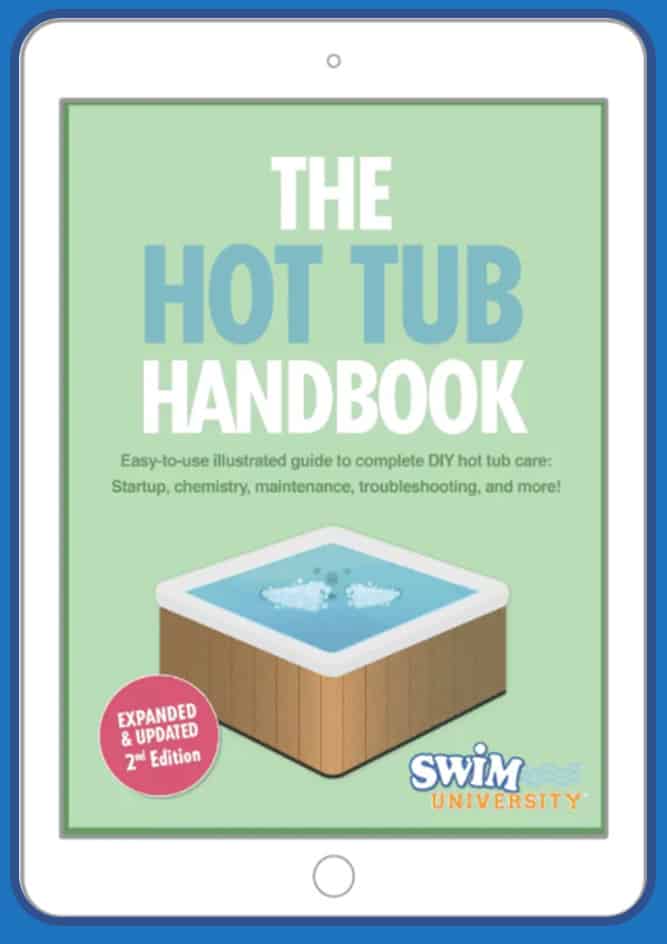
Stop wasting time and money with hot tub maintenance and confusing water chemistry! Get Instant access to this easy-to-use book and video course so you can spend less time cleaning and more time soaking.
Learn MoreConsider Using a Water Care Monitor
Monitoring the health of your hot tub can often be challenging if you are not testing the water on a regular basis. This can also be a problem if you go on holiday or you are unable to take care of your hot tub due to mobility issues.
The pHin Smart Water Care Monitor for pools, hot tubs, and inflatable spas continuously tests the water and alerts you when to add chemicals with the integrated mobile app.
The mobile app will inform you when to add chemicals such as chlorine, and how much chemical is recommended. This is done by entering your hot tub or pool’s unique dimensions.
Simply scan the bar code of any chemical brand and the pHin app will calculate how much chemical is to be added to the water. Most products and brands are recognized by the application.
The pHin device will sample water more than 1000 times per week to give you an accurate reading compared to using test strips.
The pHin device works with different water types including chlorine, bromine, and saltwater hot tubs, swim spas, inflatable hot tubs, and pools.
This unique device comes with a lifetime warranty to ensure your water remains clear and ready for you to use at all times.
Is it Safe To Use a Hot Tub With High Chlorine?
No, it is not safe to get in a hot tub where chlorine amounts are higher than three parts per million (3ppm). Levels above this level could lead to reddish, itchy eyes, irritated skin, and possible respiratory problems. Levels over five parts per million (5ppm) can lead to chlorine poisoning, including nausea, vomiting, and difficulty breathing.
You only require a small amount of chlorine to sanitize your spa successfully, so it’s possible to overdo it if you’re not careful. On the other hand, an excessive amount of chlorine can damage your hot tub and irritate skin, eyes, and lungs. Thankfully, reducing the chlorine levels on your hot tub is relatively easy to do.
But that’s only the start of proper water chemistry. Keeping it balanced and ensuring that the hot tub is safer to soak in is incredibly important.
When used correctly (and in the correct amount), sanitizers such as chlorine and bromine kill undesirable bacteria and other organic material from your hot tub.
However, if the degree of chlorine is overly high, it can cause undesirable problems both physically for people and also for your hot tub itself.
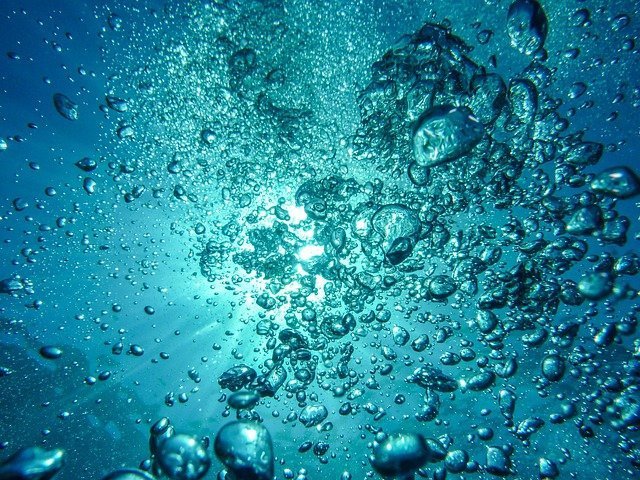
Hydrogen Peroxide to Lower Chlorine in Hot Tubs
Lowering chlorine levels using hydrogen peroxide is safe as it just produces oxygen gas, water, and chloride salt the Following:
H2O2 + HOCl —> O2(g) + H+ + Cl- + H2O
Hydrogen Peroxide + Hypochlorous Acid —> Oxygen Gas + Hydrogen Ion + Chloride Ion + water.
When chlorine oxidizes a compound or has divided in sunlight, it’s a net acidic process, but the pH went up whenever the chlorine was inserted, so the aforementioned chemistry drops it back down to where it started.
When you are employing hydrogen peroxide to reduce chlorine levels, the hydrogen peroxide is used as a reducing agent, not an oxidizer. Yes, it is an oxidizer; however, chlorine is the more potent oxidizer and oxidizes the hydrogen peroxide when chlorine is around. An average of 3% hydrogen peroxide you get is good stuff, with the others simply being water. There aren’t harmful impurities. You could even obtain the more concentrated product as Baquacil Oxidizer Shock, which is 27% hydrogen peroxide.
Chlorine Fumes From a Hot Tub
Chlorine can cause health problems when inhaled. Inhaling chlorinated water vapors exposes one Volatile Organic Chemicals (VOCs) and Disinfection By-Products (DBPs). These chemicals could be hazardous to the delicate tissues in the lungs. In addition, the hot water and close quarters to the spa water vaporize chlorine, VOCs, also DBPs. This toxic vapor is then inhaled.
This chemical vapor is particularly difficult for asthmatics, but it can cause severe lung and sinus issues for those with healthy respiratory systems. This is why having proper chlorine levels inside your hot tub is incredibly important.
Why Does My Hot Tub Smell Like Chlorine?
A hot tub that smells like chlorine is often the result of too many chloramines in the hot tub. To get rid of chloramines, add 30g (1 capful) of oxidizer to the spa. Another reason could be the pH is not balanced correctly. The pH should be between 7.4 and 7.6. Finally, if the spa water has not been drained for a long time, it could produce a foul chemical odor. Draining the hot tub is the best course of action if this is the case.
On a test strip, then there’s scanning for both Chlorine and Free Chlorine.
Overall, chlorine is free chlorine + combined chlorine. Free chlorine is chlorine that isn’t mixed with anything else. It is free and can be applied as an effective sanitizer.
Implementing chlorine, also called chloramines, is chlorine that is bonded or attached with whatever it is trying to destroy in the spa water.
Free chlorine will immediately develop into combined chlorine if a hot tub’s water has unwanted bacteria. This will make your chlorine reading low.
If you are smelling a strong chlorine smell, this usually means that you’re likely smelling chloramines.
This means that the hot tub is experiencing a hot tub “lock.” This occurs when the spa water isn’t being sanitized correctly from the chlorine.
The evaluation strips additionally show correct chlorine levels. Nevertheless, you’re not being shielded by free chlorine.
This is why shocking your hot spa weekly will become necessary. Shocking a health spa means employing a dose of chlorine (sodium dichlor) or even non-chlorine shock (potassium monopersulfate or MPS).
One cause of this treatment will be to break down organic waste contaminants that cause odor and cloudy water. For example, when chlorine “lock” happens, shocking the hot tub will break the chloramines and purify your hot tub water.
Check out our full article on how to fix a hot tub that smells like chemicals for more information.
I recommend SpaGuard Enhanced Shock for a chlorine oxidizer.
How Fast Does Chlorine Dissipate in Hot Tub?
When a spa cover is off, UV rays from the sun will begin to deplete any chlorine that hasn’t been stabilized with cyanuric acids, such as lithium hypo. One ppm of unstabilized chlorine will dissipate in 15 minutes or less under direct sunshine. With a heated spa, this dissipation speed is much faster.
Chlorine levels can dissipate in a hot tub for a couple of reasons. To begin with, it breaks down in heat fast. That is why many hot tub owners prefer bromine. However, it also requires a weekly shock to keep it from changing right into chloramines. Lastly, you may have biofilm buildup, which can drastically reduce chlorine levels. Always ensure your hot tub is clean.
Check out our full article on how to shock a hot tub and why it’s important for more information.
You could also address the biofilm problem by cleaning and sanitizing the pipes thoroughly. Proper cleaning of the pipes helps to eliminate biofilm build-up. Ensure that you are adding enough sanitizers alongside any pungent treatment to your hot tub.
When emptying the hot tub, add Oh Yuk Cleaner to clean out the hot tub pipes.
How To Lower Chlorine in a Hot Tub: Conclusion
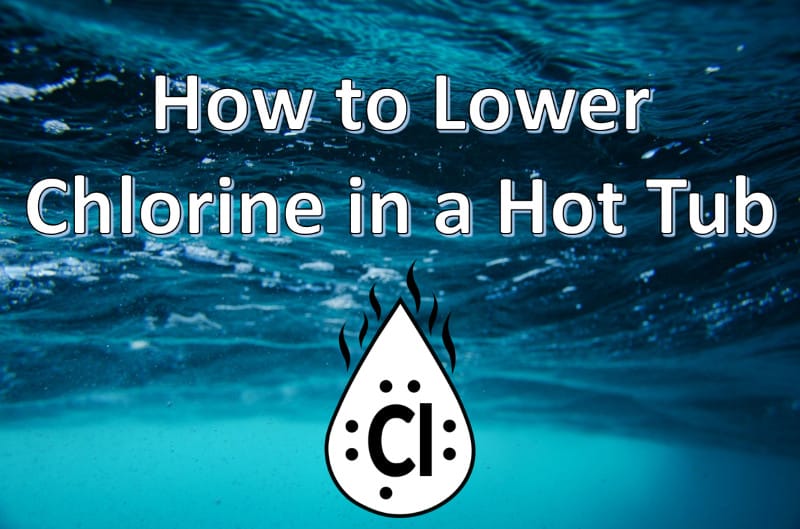
I have seen that chlorine levels inside a hot tub are very important to be well balanced. If the chlorine levels are not balanced, it can cause problems for both the person using the spa and the hot tub components.
If your hot tub has too much chlorine, then adding fresh water and leaving the spa alone for a day should naturally lower the chlorine levels. However, adding a chlorine neutralizer will significantly reduce the amount of chlorine in the spa water.
Check out our article on leaving a hot tub on all the time for more information on long-term hot tub care.
Finally, if you need chlorine tablets and want to know more about how to add chlorine to your spa, check out our full article on the subject.
I hope you found this article on how to lower chlorine in a hot tub helpful.
James Brockbank

Stop wasting time and money with hot tub maintenance and confusing water chemistry! Get Instant access to this easy-to-use book and video course so you can spend less time cleaning and more time soaking.
Learn More






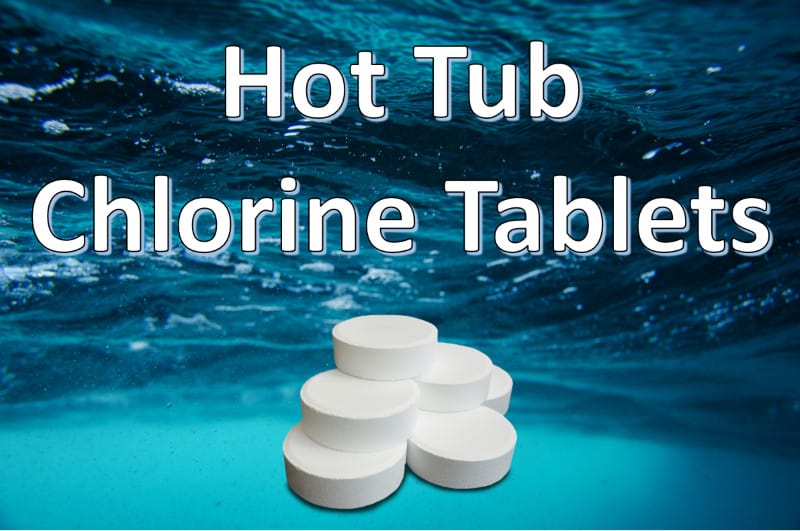
![Hot Tub Shock: Why It’s Important [#1 Guide]](https://www.spatoolkit.com/wp-content/uploads/2021/02/hot-tub-shock.jpg)
